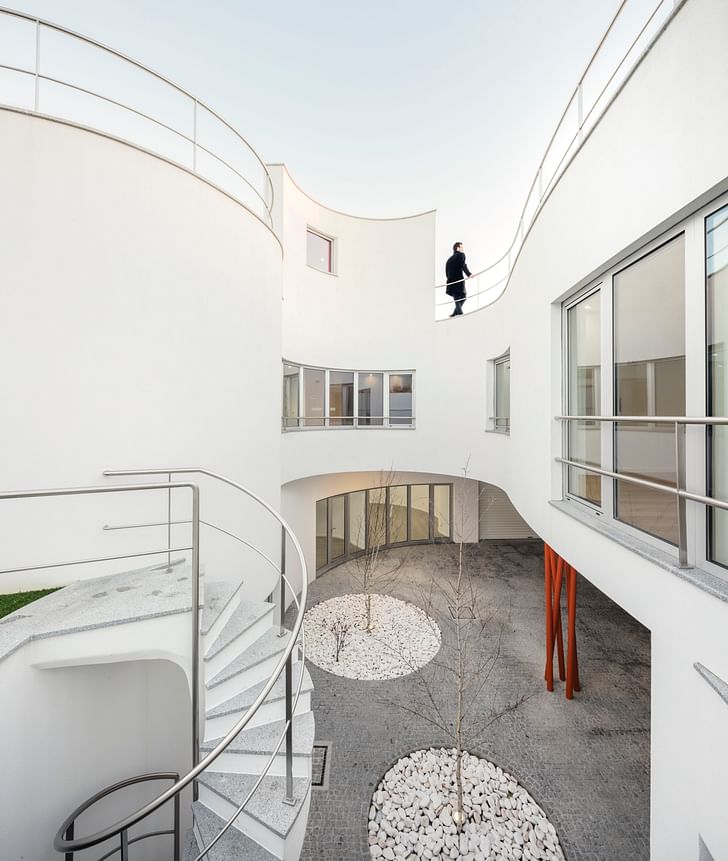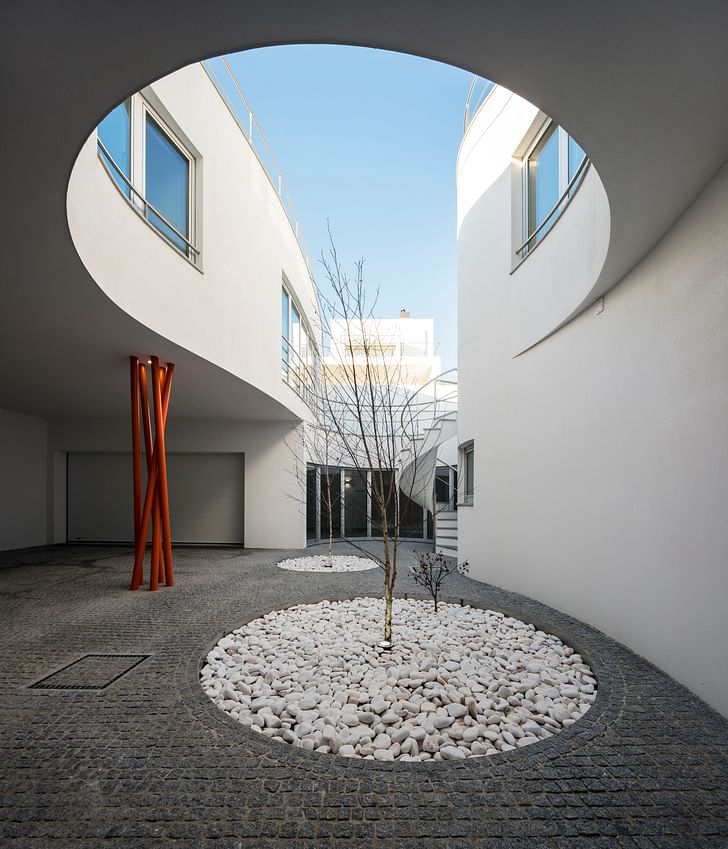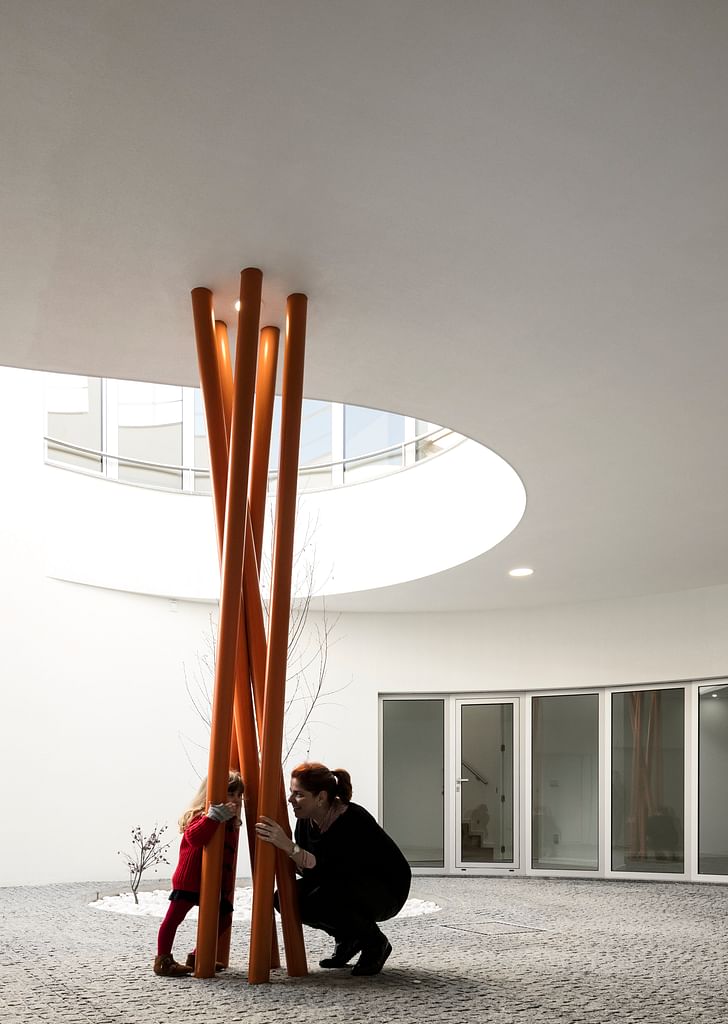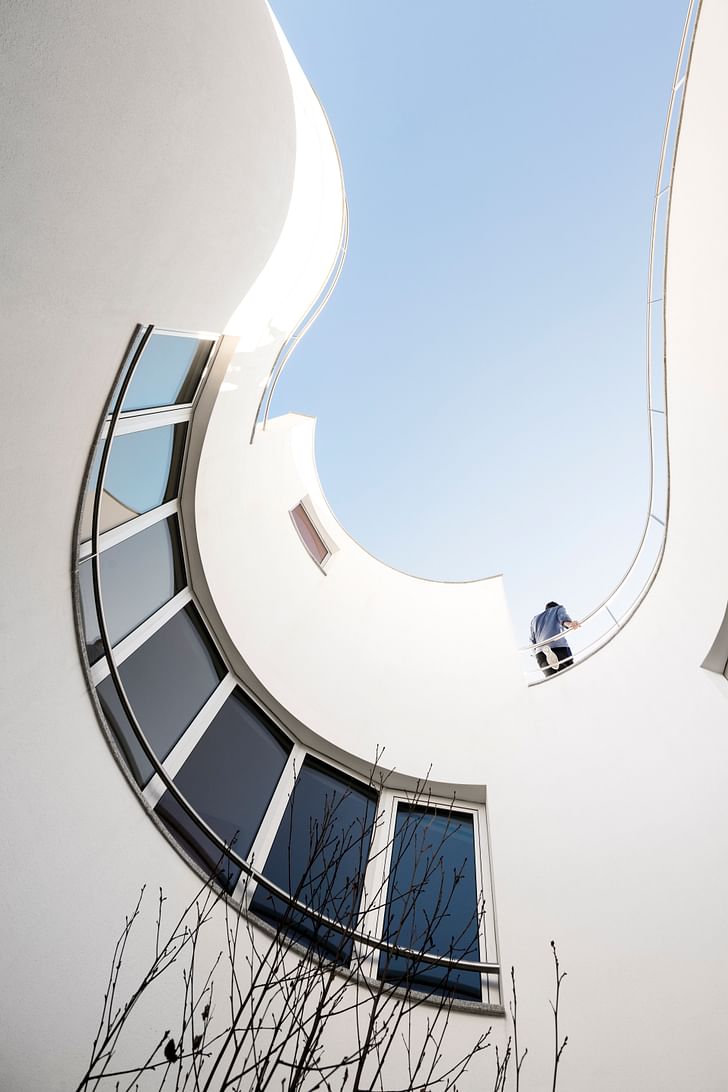

Located in a suburban area of Póvoa de Varzim, a coastal town in Portugal known unsurprisingly for its fish and beach resorts, sits a stark white home. Inserted into a gridded plot and enclosed by fragmented gardens and paved areas, House L27, stands apart from its neighbors. Designed by José Cadilhe of dIONISO LAB, the home plays with the standard geometry of the surrounding construction by offering a more fluid alternative in which the exterior becomes the central, organizing space.
A central premise to Mr. Cadilhe's work is the cultivation of a strong sense of intimacy. For this project, privacy is toyed with by framing views and creating a relationship with the street. From this vantage, the entrance engages the home's cylindrical volumes and offers a sliver of intrigue where the massing smoothly adapts between the central garden and perimeter walls.
Inside, the house was conceived of floor by floor. The architect explains that the first floor gathers the main social spaces and private areas while the second is composed by complementary spaces such as a large living room, library, storage, and garage. This leads to the climactic access of the roof, which breaks the continuous line of volume and invites the homeowners and visitors to take in their surroundings. While the view from the top is quite nice, the patio, according the designer, is the real protagonist. Cadilhe reimagines this outdoor area as the place were domestic energy resonates. Blurring the line between inside/outside, the patio engages in constant dialogue with the interior.

What was the brief like and what design elements were stipulated by the client?
The program was for a three bedroom house with some additional spaces that can be complementary and add more social value and flexibility such as a lounge space and an office/library. Also, as part of the brief, the client also expressed a desire to guarantee a stronger sense of privacy, integrating the exterior spaces with the life of the house and daily routines.

Can you discuss how this design plays with the relationship between privacy and openness to the surrounding area and how the location of Póvoa de Varsim influences this project?
Póvoa de Varzim is the city I was born and lived for many years so I am naturally attached to it and its richness is a fundamental part of my background. For this project in particular, as it is located in a suburban area, the master plan is quite generic and based on linear organization. Also, the regulations define a strict set of rules that easily suggest a central occupation of the plot, leaving the rest of the plot as a series of fragmented gardens. These generally don't have a regular participation in the daily routine and are almost leftovers, paved areas with no use.
It is almost like a symbiotic relationship, a constant dialogue between interior and exterior that enriches the spatial experience, perceiving the house and its gardens as a whole.
Therefore, given the brief, it became quite interesting to challenge this and propose something that could establish a more intricate articulation of volumes that fully integrate the external areas with the domestic life. By doing so, it is almost like a symbiotic relationship, a constant dialogue between interior and exterior that enriches the spatial experience, perceiving the house and its gardens as a whole.
Finally, the relationship with the exterior is ultimately achieved and celebrated by the small volume that breaks the massing at the top, allowing the residents to experience wide views and expand the house to the horizon.


What aspects of this project do you think exemplify the ethos of your work?
I believe there is not a general ethos in my work. However, there are some key aspects that really interest me in architecture and in a spatial experience. Intimacy is definitely one of them—the energy of a certain atmosphere to allow one to feel comfortable and available to engage in a stronger sense of awareness and achieve another degree of freedom/possibilities/flexibility. Also, creating spatial experiences that bring surprises or suggestions to enhance a more dynamic and proactive relationship between building and user as well as an intricate articulation with the surrounding environment. Then, matter, textures....


1 Comment
Impressive design!
Block this user
Are you sure you want to block this user and hide all related comments throughout the site?
Archinect
This is your first comment on Archinect. Your comment will be visible once approved.